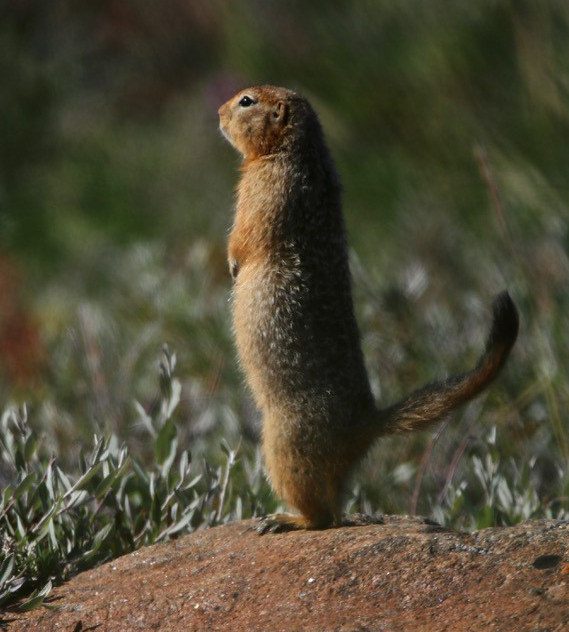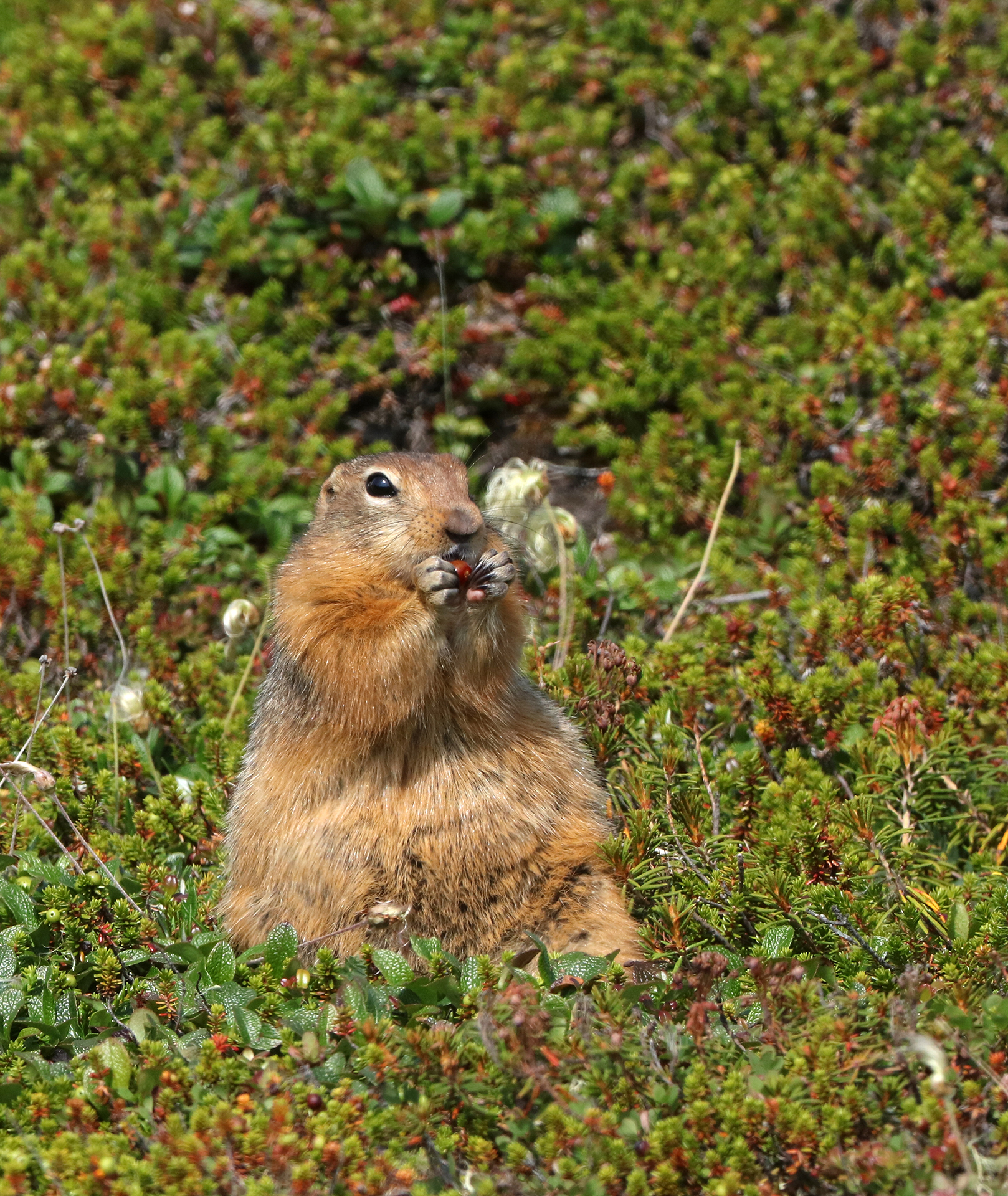Scientific name: Spermophilus parryii
Average length/height: 332-495 mm (13-19 inches)
Average weight: 524 – 1500g (1-3lbs)
Characteristics
The largest of the North American ground squirrels, siksiks bulk up significantly in the summer and lose a lot of weight while in hibernation. Their fur is different shades of reddish brown with white flecks. They have tubular bodies with short tails like most ground squirrels. Their sharp claws are well adapted for digging and burrowing in the tundra with only four digits on their front feet and five on their hind.
Siksiks “supercool” themselves while in hibernation. Their body temperature drops as low as -2.9 Celsius and their heart rate slows to about three beats per minute. Every two to three weeks they will shiver themselves awake. It’s believed that the sheer effort of moving the blood starts to create heat in the body. Once awake, sik-siks maintain a regular body temperature for 12-15 hours while they eat from their pantry.
Territory/Geographical Locations
Found in the Arctic, tundra, boreal forest, and alpine meadows. They live in northern regions of Canada reaching down to the northern parts of British Columbia and Manitoba, as well as in Alaska and Siberia. They choose to live where sandy soil is accessible since the ground is frozen much of year, allowing for easier digging.
They live in shallow burrow systems up to 20 meters in length. They have duck holes, which are short and have multiple entrances to hide from predators. Another type of burrow is multilevel with nest chambers and exits, sometimes shared by closely related females. Finally, there are burrows used for hibernation called Hibernacula burrows. These can be connected or separate from other burrows (Torre, n.d.).
Population & Reproduction
Litters of Arctic ground squirrels can have multiple fathers. Males do try to defend a territory with multiple females still hibernating, as males wake up from hibernation first. There is a short window of 12 hours where a female can be impregnated so the males can get quite aggressive, even killing one another. Males also die after breeding season due to lack of nutrition and poor immune systems, since they spend the immediate time after hibernation fighting and mating, instead of eating.
Females will share duties of the young, to protect from predators and male Arctic ground squirrels that would otherwise commit infanticide. There is a gestation period around a month long and the mother usually gives birth to anywhere from two to 10 babies. They can live 8-10 years but generally their mortality rate in the first year of life is quite high. (Torre, n.d.)
Diet
Arctic ground squirrels are omnivores, consuming eggs, baby birds, their own species, plants and invertebrates. They eat mainly plants and their food for hibernation is completely made up of plants, where they will consume all parts of plants including the roots. (Torre, n.d.)










